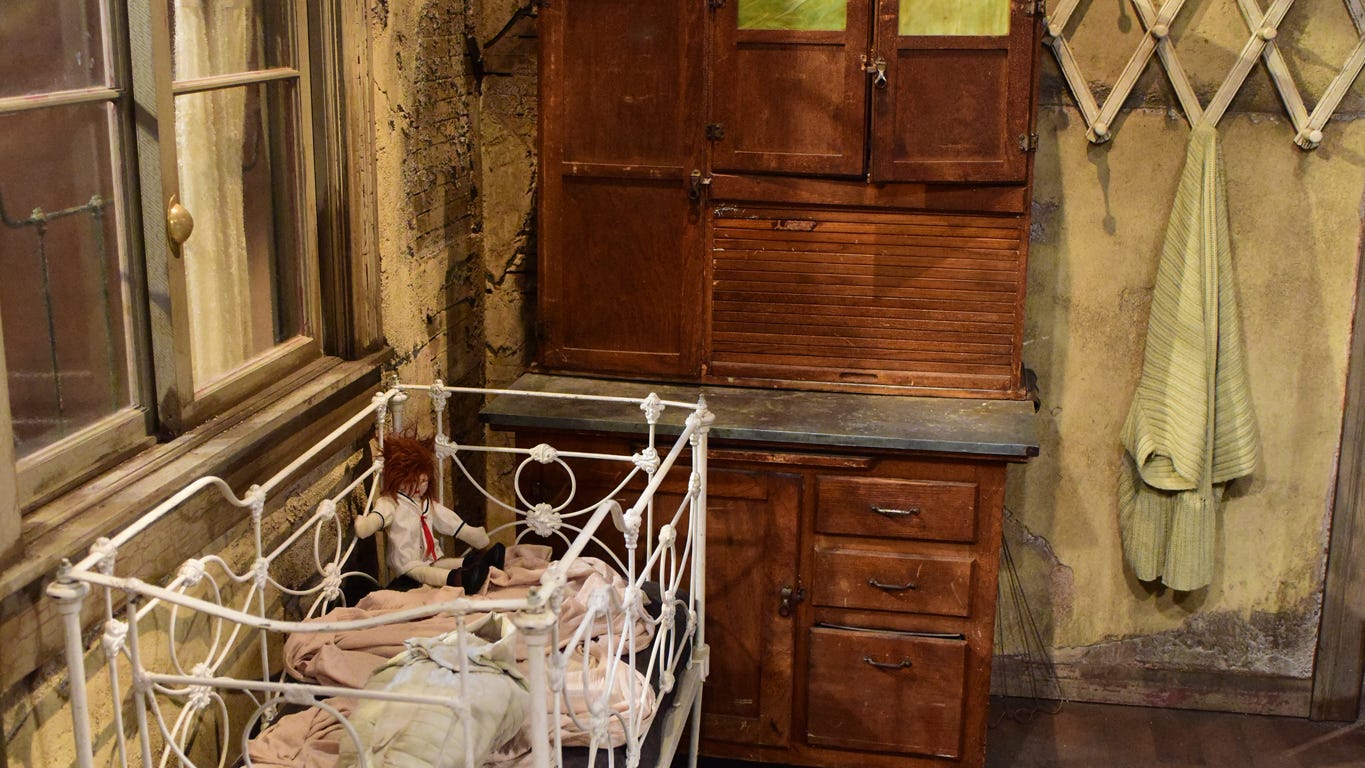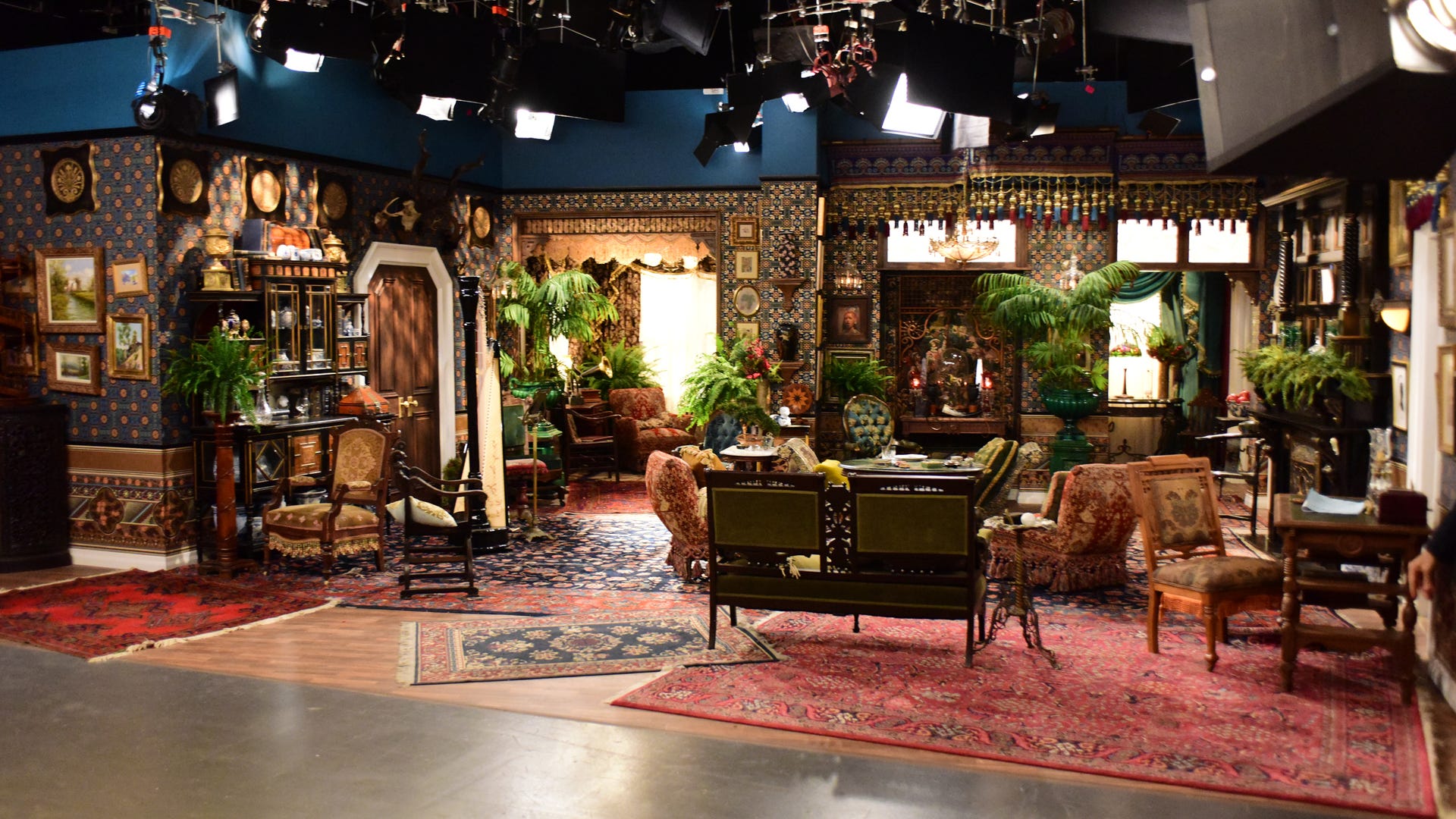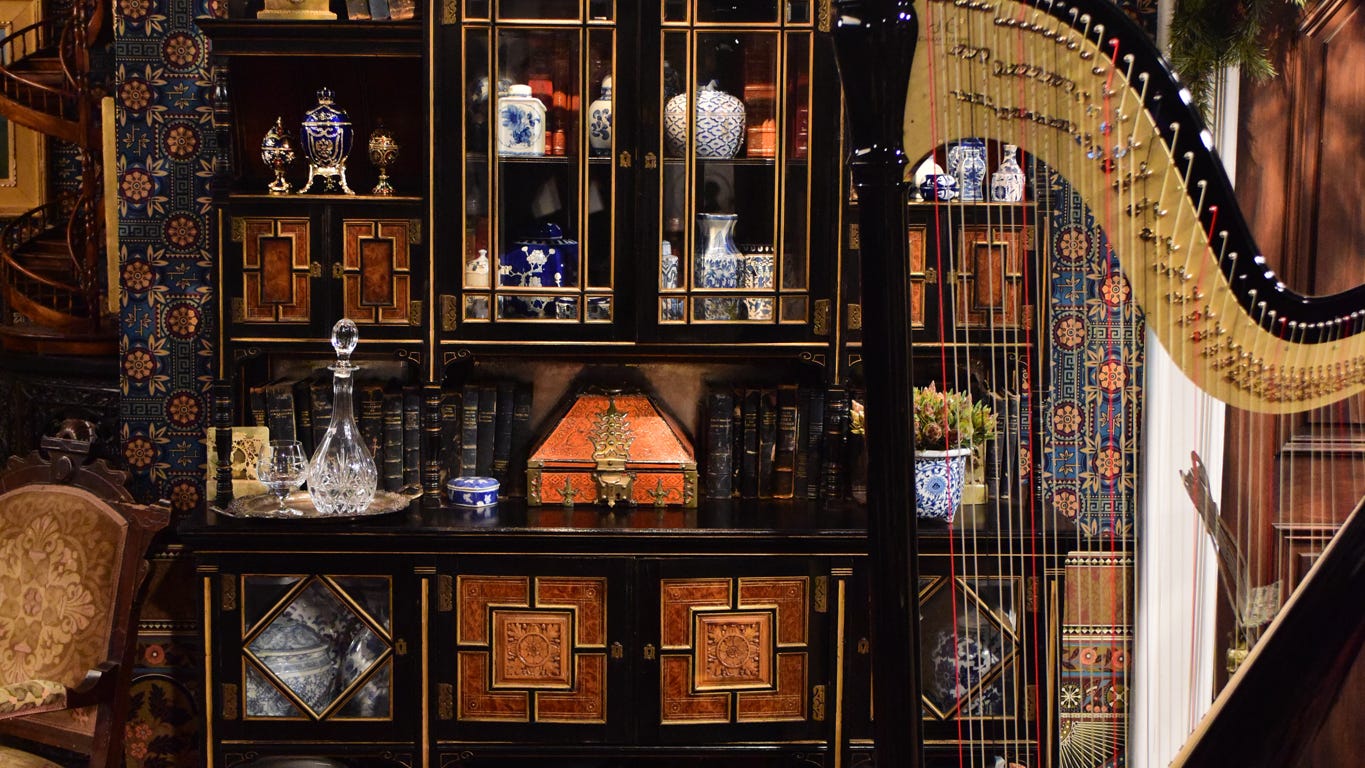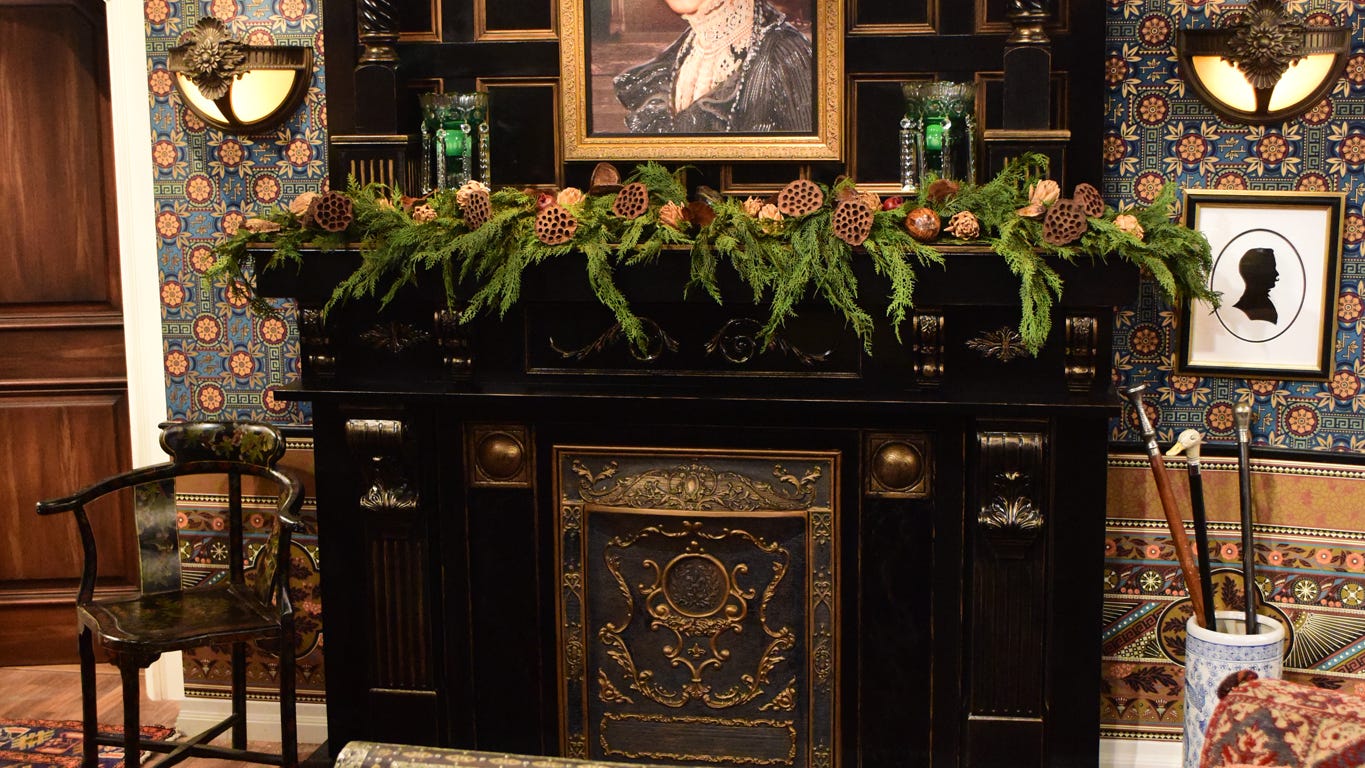Join or Sign In
Sign in to customize your TV listings
By joining TV Guide, you agree to our Terms of Use and acknowledge the data practices in our Privacy Policy.
See How Will & Grace's Christmas Episode Pays Tribute to Debbie Reynolds In These Exclusive Photos
Inside what'll be Will & Grace's most memorable sets ever
[Caution: spoilers about Will & Grace's holiday episode below! Read at your own risk!]
Seriously don't read any more if you don't want to know what happens!
Will and Grace will be going back in time for the holidays -- or at least, a version of them will be -- and will pay homage to the late recurring star Debbie Reynolds too.
Will & Grace's "A Gay Olde Christmas," airing the first week of December, starts with Will (Eric McCormack), Grace (Debra Messing)), Karen's (Megan Mullally) and Jack (Sean Hayes) wishing they could experience the New York city of old, and then by the magic of TV, are transported to 1912 Manhattan via alter egos.
Will will become Billem Van Williams, a wealthy and worldly (read: probably gay) man with exquisite taste married to Fanny Van Williams, who'll bear an uncanny resemblance to Grace. Megan Mullally, meanwhile, is in an ironic role reversal as Karolyn O'Malley, a dirt poor woman living in a tenement; she takes in a sailor, John Patrick Mcgee (Sean Hayes) who has relationships with men only at sea. This is all right before World War I, a time of great prosperity -- for some -- and the episode will show how their disparate worlds intersect.
As fun as the premise is, viewers will also get treated to eye-popping sets that will go down as some of the most memorable in the show's nine seasons. TV Guide got exclusive pics of the sets, and spoke with set decorator Peter Gurski and production designer Glenda Rovello about the painstaking process of creating the magical rooms.
"We are stepping back in time to the Victorian era," production designer Glenda Rovello told TV Guide, "and get to see what it was like for characters such as ours."
Creating Karolyn O'Malley's tenement took painstaking research

Will & Grace, Karolyn O'Malley room
Dave Bjerke/NBCRovello poured over historical photos of tenements to make Karolyn's space, which is packed with details accurate to the times. For example, people in the ghettos of the era didn't have running water, and buildings weren't required to. That's why the 80-year-old washtub isn't connected to plumbing -- there wasn't any -- and water for the basin has to be brought in from outside.

Will & Grace, Karolyn O'Malley's room with crib
Dave Bjerke/NBC"Though [people in tenements then] were very poor there were lot of homely touches," Gurski said, like the simple cloth on the shelf in the first photo above. "We tried to duplicate that sense of making a simple place look nice."
And yes, that small white bed is in fact a crib: Karolyn had seven children (!) -- one of whom didn't even get a name until after a year, just to be sure the kid made it before they got attached. (Gotta love that Will & Grace humor.)
"One of the things we were striving for was to be very historically accurate," Gurski said. None of what's in the sets are true antiques -- the team scoured prop houses in Los Angeles to get almost everything.
Billem's parlor captures the mood of the moment, and a movement of world travelers
If Billem's parlor, below, looks familiar, it should: the room has exactly the same bones as those of Will Truman's famed apartment. All the stuff in it is entirely different, of course -- Will's TV room is Billem's library; his front door is the entrance to Billem's parlor. Like Will's pad, Billem's has been meticulously curated. "We wanted to show that Billem was worldly and he had fabulous taste," said Rovello.

Will & Grace, Billem's apartment
Dave Bjerke/NBCInspiration came from the Aesthetic Movement, the "cult of beauty," as it's known, that put a premium on surrounding one's self with gorgeousness at all costs. Oscar Wilde -- "one of the original A-list gays," Gurski said -- was one its champions. Billem, like Wilde, traveled to far-flung places frequently, and fell in love with the pieces he saw from around the world, such as Persian rugs and beautiful ornaments of the Orient, which was just opening up to the West.

Will & Grace, Billem apartment with harp
Dave Bjerke/NBCThe sideboard, Gurski believes, dates back to 1910, stuffed with things Billem might've collected on his travels, or seen in the emerging picture books of the era. The harp is modern, but is in the set because when Gurski tried to find the piano writers originally had in the script, he couldn't find one that fit the mood. Same with the chandelier, which illuminates how Billem would've been one of privileged few who had electricity, a luxury at the time. Only the wallpaper, which Rovello ordered from a California firm that does hand-screen recreations, is new. Amid these lush environs is one item that is almost easy to overlook despite its significance: the portrait above the mantle.
Debbie Reynolds gets a subtle tribute in the form of a painting

Will & Grace, Debbie Reynolds painting
Dave Bjerke/NBC"It's an homage to Grace's mother," Gurski says, referring to the late Debbie Reynolds. Custom painted for the set, the portrait is based on Reynold's turn in The Unsinkable Molly Brown. A reference Grace/Fanny's mother -- and the painting -- came up in the original script but has since changed; the designers left it up as a tribute to her. It now lives in the writers' room providing them inspiration, although when people see it in the episode, it'll be a gift for all.
Will & Grace airs "A Gay Ole Christmas" Tuesday, Dec. 5 at 9/8c on NBC.
